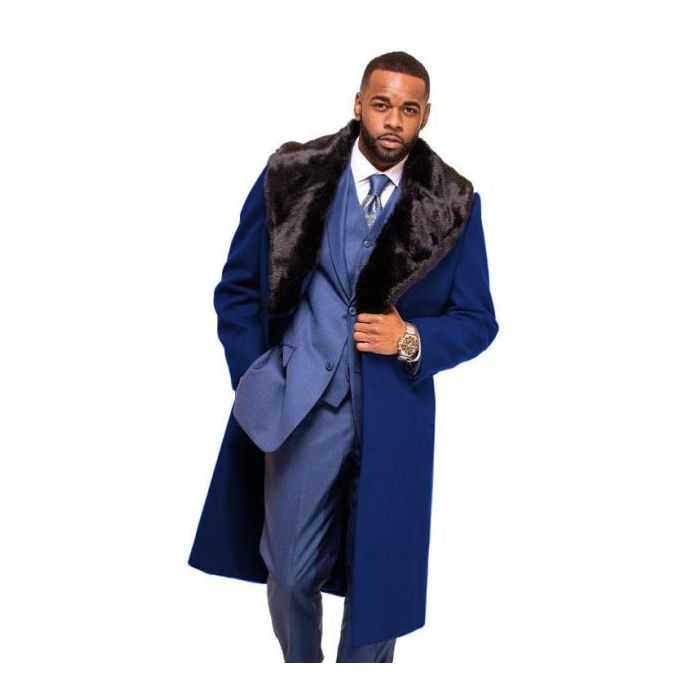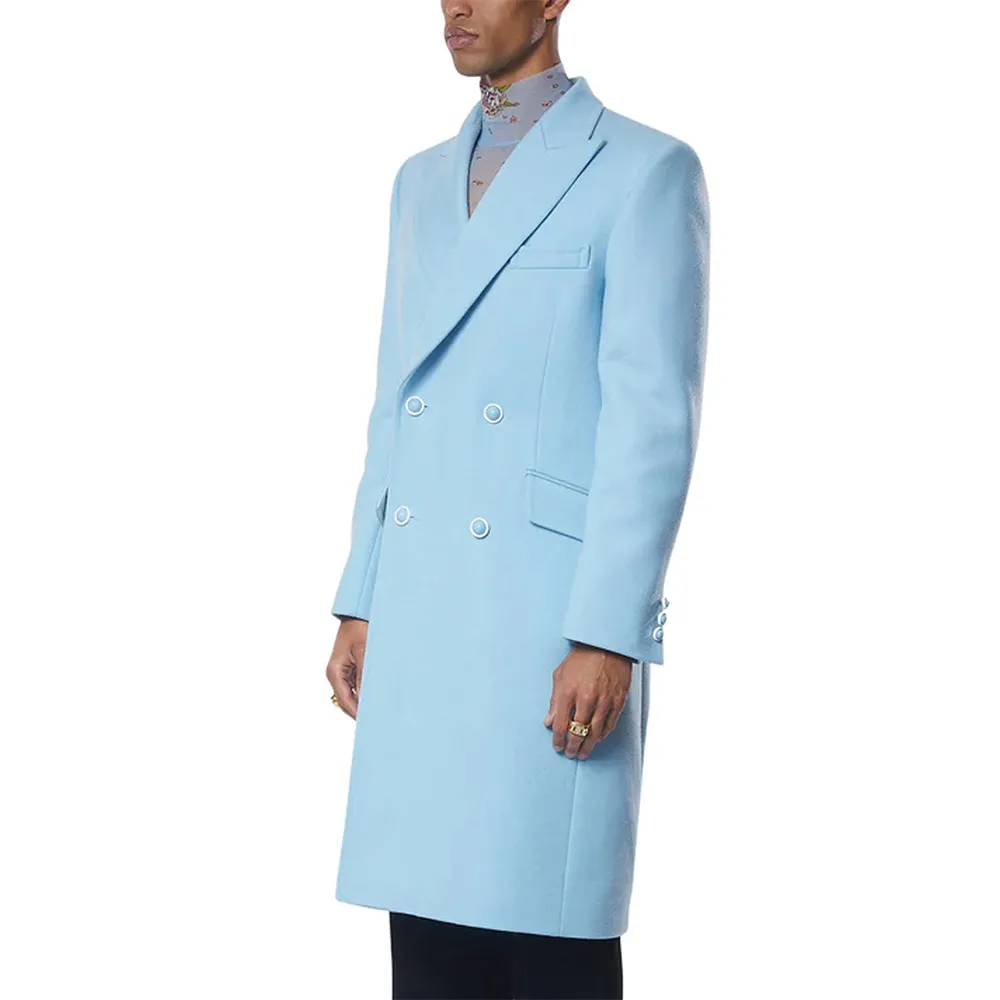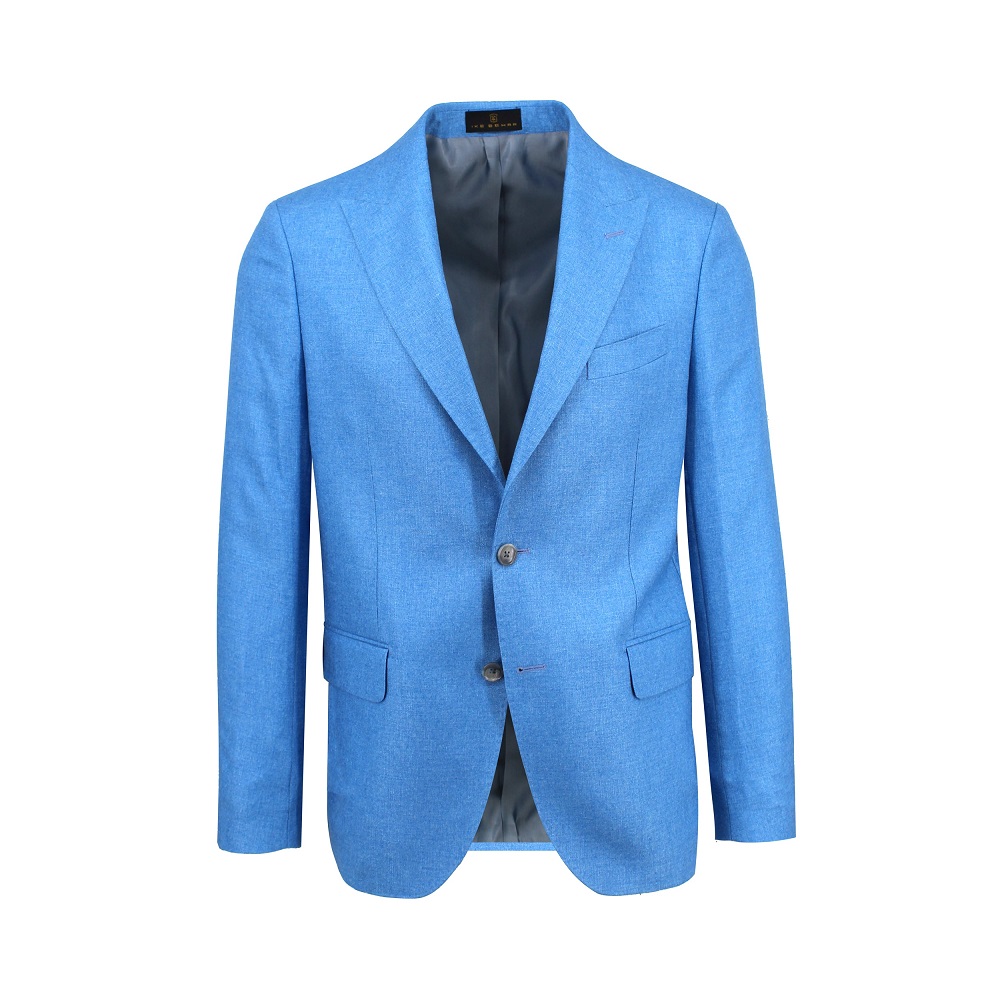
Introduction: The Importance of Outerwear
Why Choose a Blue Coat?
A blue coat is a classic and versatile addition to any wardrobe. Its timeless hue offers a refreshing alternative to traditional black or gray outerwear, adding a pop of color while remaining sophisticated and stylish. Whether made from wool, down, or synthetic materials, blue coats can complement a wide range of outfits and occasions. They are suitable for both casual outings and more formal events, making them a staple piece for any season.
The Need for Care and Maintenance
Like any garment, outerwear requires proper care to maintain its appearance and extend its lifespan. A blue coat can easily become a centerpiece of your wardrobe, but neglecting its maintenance can lead to premature wear and loss of its aesthetic appeal. This article will provide essential tips for caring for your blue coat, ensuring it remains a cherished and stylish piece in your collection.

Understanding the Fabric
Determine the Material
Before diving into care tips, it’s essential to understand the fabric of your blue coat. Different materials require distinct care approaches, so recognizing what your coat is made of will inform your maintenance routine.
- Wool: Wool coats are temperature-regulating and naturally water-repellent. They often have a luxurious feel but can be prone to pilling.
- Down: Down coats provide excellent insulation and are usually lightweight. They require careful washing to prevent clumping of the down feathers.
- Synthetic Fabrics: These are often more durable and easier to care for, but they may not provide the same warmth as their natural counterparts.
Reading the Care Label
Most blue coats come with a care label that provides crucial information about cleaning and maintenance. Always read this label before attempting any cleaning or care processes. It often includes washing instructions, suitable temperature settings, and whether the item is safe for dry cleaning. Following these guidelines is vital for preserving the integrity of your coat.

Regular Cleaning and Maintenance
Establish a Cleaning Routine
Regular cleaning is essential to keep your blue coat looking fresh and new. Depending on the fabric and frequency of use, you may need to determine how often your coat needs cleaning.
- Frequency: For coats worn frequently, it is generally a good idea to clean them at least once a season. However, if you wear the coat daily or during particularly messy weather, more frequent cleaning may be necessary.
Removing Dirt and Stains
For minor stains or dirt, spot cleaning is often sufficient and can help prolong the time between full washes. Use a damp cloth and a suitable fabric cleaner for the specific material.
- Wool Coats: For wool, use a gentle detergent and a soft cloth to blot stains. Avoid soaking the fabric, as wool can distort when wet.
- Down Coats: For down, check if the outer fabric is water-resistant. If it is, simply wipe down with a damp cloth. For stains on the lining, you may need to use a specialized down cleaner.
Washing Your Coat
The Machine Wash Dilemma
For many materials, hand washing is the safest option, but some coats may tolerate machine washing. Check the care label for instructions regarding machine washing.
- Wool Coats: Wool coats usually require dry cleaning. If hand washing is allowed, use cold water and a wool-specific detergent. Remember to handle it gently to prevent felting.
- Down Coats: If your down coat is machine washable, wash it on a delicate cycle using cold water. Using a front-loading washer is ideal to avoid damage.
Air Drying Your Coat
After washing, avoid using a dryer unless the care label specifies that it is safe to do so. High heat can damage certain materials and lead to shrinking.
- Drying Procedures: For down coats, it’s helpful to place clean tennis balls in the dryer (on a low-heat setting) to keep the down from clumping. For wool or synthetic coats, lay them flat on a clean, dry towel to air dry. Ensure they are placed in a well-ventilated area away from direct sunlight to prevent fading.
Storing Your Coat
Seasonal Storage Tips
When the seasons change and you no longer need to wear your blue coat, proper storage is essential to keep it in good condition.
- Cleaning Before Storage: Always have your coat professionally cleaned before storing it long-term. This helps eliminate stains and prevents damage from lingering dirt or odors.
- Hanging or Folding: Depending on the fabric, you may want to either hang or fold your coat. Wool coats should generally be hung on wide, padded hangers to maintain their shape, while lighter synthetic coats can be folded to save space.
Choosing the Right Storage Environment
Storing your coat in a cool and dry place is critical. Avoid damp basements or attics where moisture can lead to mold or mildew.
- Climate Control: Consider using silica gel packets in storage to absorb moisture. A breathable garment bag can also prevent dust and dirt from accumulating while allowing airflow.

Protecting Your Coat from the Elements
Weather Precautions
Depending on how you typically wear your blue coat, it may be exposed to different weather conditions that can affect its appearance and longevity.
- Water Resistance: If your coat is made from natural fibers like wool, it may not be water-resistant. For this reason, consider applying a waterproofing spray designed for the specific material of your coat.
- Sun Exposure: Prolonged exposure to direct sunlight can fade the color of your coat. When storing it, keep it away from direct sunlight, and consider using UV-protective covers if necessary.
Dealing with Heavy Use
If you frequently wear your coat in harsh conditions (e.g., snow, rain), be proactive in your care routine.
- Quick Clean After Exposure: Wipe off any moisture or dirt as soon as you return home. This prevents corrosion and maintains the fabric’s appearance.
- Regular Inspections: During heavy usage, regularly check for signs of wear, such as loose threads, holes, or fabric pilling, and address these issues promptly to prevent further damage.
Repairing Common Issues
Addressing Pilling
Pilling on wool coats is common and occurs when fibers break and clump together on the fabric’s surface.
- Pill Removal: Use a fabric shaver or a fine-toothed comb to gently remove the pills. This will help restore the coat’s appearance and prolong its life.
Handling Stains
For persistent stains that do not respond to spot cleaning, consult a professional cleaner who specializes in the specific fabric of your coat.
- Avoid DIY Remedies: While many online remedies exist for stain removal, they can sometimes do more damage than good. Relying on a professional is often safer and yields better results.

Enhancing the Coat’s Look
Accessories That Complement
Accessorizing your blue coat can elevate your overall look. Consider adding items like scarves, gloves, and hats that harmonize with the coat’s color and style.
- Scarf Choices: A contrasting scarf or a patterned one can provide a pop of visual interest while keeping you warm.
- Footwear Coordination: Choose shoes that complement the coat’s color, such as brown leather boots, which pair excellently with shades of blue.
Layering for Style and Warmth
Layering is also essential when wearing a blue coat during colder months.
- Smart Layering: Pair a light sweater or cardigan underneath to ensure you stay warm while maintaining an aesthetically pleasing silhouette.
- Color Harmony: When layering, consider using colors that complement blue, such as grays, whites, or earth tones. This creates a polished and intentional appearance.
The Evolution of the Blue Coat in Fashion
Historical Context
The blue coat has evolved through fashion history. Initially popular among sailors and members of the military, the color blue was associated with professionalism and reliability.
- Cultural Trends: Over time, the blue coat became a staple in civilian wardrobes, adapting to various fashion trends and becoming a symbol of elegance and versatility.
Modern Applications
Today, the blue coat serves multiple purposes. It remains a fashionable choice for human beings, adapting to different styles to suit contemporary tastes.
- Adaptability: From casual denim jackets to formal wool overcoats, the blue coat can be found in various fabrics and cuts. This adaptability ensures its place in modern wardrobes across the globe.

Conclusion: Caring for Your Blue Coat
The Value of Proper Care
Caring for your blue coat involves understanding its fabric, maintenance routines, and proper storage techniques. By following these tips, you can ensure that your coat retains its beauty and functionality for years to come.
Making Informed Choices
Investing in high-quality outerwear is important, but so is committing to its care. The right techniques can preserve the coat’s integrity, appearance, and performance, allowing you to enjoy it fully.
Embracing Your Style
Ultimately, a blue coat can enhance your wardrobe, providing both warmth and style. By taking the time to understand and care for your coat, including following winter coat care suggestions, you not only prolong its lifespan but also ensure that you feel confident and fashionable every time you wear it. So embrace the functionality and elegance of your blue coat and enjoy the endless possibilities it brings to your personal style.
